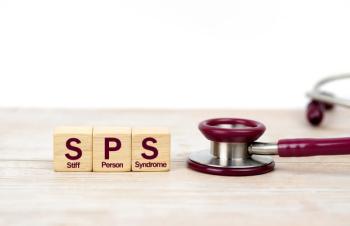
The impact of antipsychotic agent choice on the risk of coronary heart disease mortality due to cholesterol effects
Schizophrenia is a chronic disease usually diagnosed when patients are in their mid- to late 20s; therefore, patients may receive decades of exposure to antipsychotic agents over their lifetime. Whenever long-term pharmacotherapy is required for a disease, the cardiovascular implications of that therapy need to be considered. This fact was recently highlighted by the removal of the cyclo-oxygenase-2 inhibitors rofecoxib and valdecoxib from the US market because of marked elevations in cardiovascular risk.
Abstract
Antipsychotics are long-term therapies with varying effects on total cholesterol. Although the relationship between total cholesterol and coronary heart disease (CHD) mortality risk is well described, no studies have been published to date on the risk of CHD mortality due to changes in total cholesterol arising from antipsychotic use. We used a Monte Carlo simulation of 6-year CHD mortality based on total cholesterol changes in patients with schizophrenia who were taking antipsychotics. In this model, the cholesterol data from an open-label, parallel-group study of patients with schizophrenia who were taking ziprasidone, risperidone, olanzapine, haloperidol, thioridazine, or quetiapine (Study 054; N=183) were incorporated into multiple 1,000-patient Monte Carlo simulations. We used these simulations to determine this population's 6-year risk of CHD mortality using the equation derived from the Multiple Risk Factor Intervention Trial (6-year CHD death risk=0.577 e0.0113 (total cholesterol level) ). The risk of CHD mortality ranged from 3.51% (95% CI, 3.34%–3.67%) with haloperidol to 5.27% (95% CI, 5.02%–5.52%) with thioridazine. Among the atypical antipsychotics, the risk of CHD mortality ranged from 4.02% (95% CI, 3.89%–4.15%) with ziprasidone to 5.15% (95% CI, 5.11%–5.19%) with olanzapine. The order of risk, from highest to lowest, was thioridazine=olanzapine>quetiapine=risperidone>ziprasidone>haloperidol. Our model suggests that the choice of antipsychotic agent may be associated with marked differences in CHD mortality risk over 6 years due to changes in cholesterol levels. (Formulary. 2007;42:62–65.)
Schizophrenia is a chronic disease usually diagnosed when patients are in their mid- to late 20s; therefore, patients may receive decades of exposure to antipsychotic agents over their lifetime.1,2 Whenever long-term pharmacotherapy is required for a disease, the cardiovascular implications of that therapy need to be considered. This fact was recently highlighted by the removal of the cyclo-oxygenase-2 inhibitors rofecoxib and valdecoxib from the US market because of marked elevations in cardiovascular risk.3
Atypical antipsychotic agents have become the cornerstone of schizophrenia treatment because of their effectiveness in controlling both positive and negative symptoms.1,4 Although efficacy is similar among atypical antipsychotic agents in the treatment of schizophrenia, typical and atypical antipsychotics have different effects on total cholesterol levels, which could affect CHD mortality risk.1,4,9,10 The relationship between cholesterol levels and CHD mortality risk has been demonstrated previously. In the Multiple Risk Factor Intervention Trial (MRFIT), 356,222 patients aged 35 to 57 years who had not experienced a previous myocardial infarction were recruited, and patients' total cholesterol levels were recorded and followed over time.10 Researchers observed a graded, continuous, strong direct relationship between total cholesterol and the 6-year age-adjusted CHD mortality rate. To date, however, no studies have been published that attempt to evaluate the consequences of alterations in total cholesterol by different antipsychotic agents on CHD mortality risk.9 Such a clinical trial would be difficult to carry out, as a large study population and extended follow-up would be needed to analyze CHD mortality risk.
Through the use of computer-assisted modeling, existing data depicting the relationship between total cholesterol and CHD mortality from MRFIT can be used to estimate the CHD mortality risk of patients with schizophrenia who are receiving various typical and atypical antipsychotic agents, as these agents are known to alter serum total cholesterol levels.10,11,12 The aim of this study was to model the predicted impact of different antipsychotic agents on a patient's risk of CHD mortality due to a change in cholesterol levels.
MATERIALS AND METHODS
Our model was based on 2 previous studies. Study 054, an open-label, parallel-group study of patients with schizophrenia (N=183), assessed the effect of oral doses of ziprasidone 160 mg (n=35), risperidone 6 to 8 mg and 16 mg (n=28), olanzapine 20 mg (n=28), haloperidol 15 mg (n=32), thioridazine 300 mg (n=31), and quetiapine 750 mg (n=29) on patients' total cholesterol levels by evaluating the fasting lipid panels of patients after achievement of steady-state drug concentrations (approximately 15–25 days after drug initiation).9 For our model, data from Study 054 were incorporated into multiple 1,000-patient Monte Carlo simulations using a 6-year CHD risk equation.12
The 6-year CHD risk equation was based on MRFIT, which evaluated the relationship between total cholesterol and CHD mortality.10 This observational, epidemiologic study demonstrated the continuous, graded, and direct relationship between total cholesterol levels and 6-year mortality rates due to CHD. Data from MRFIT were used to derive the following equation (model fit: R2=0.98) to predict 6-year CHD mortality based on total cholesterol levels: 6-year CHD risk=0.577 e0.0113 (total cholesterol level) .
For this model, our Monte Carlo methodology applied the Study 054 total cholesterol data to a "triangular distribution" probability density function to generate the total cholesterol absolute change from baseline distributions for patients receiving each of the antipsychotic agents. These probability distributions were then added to reported baseline levels to derive postdosing distributions, which were used to model patients' CHD risk using the MRFIT equation. For each agent, median absolute changes from baseline in total cholesterol were taken from published results of Study 054 and used as the likeliest value in the triangular distribution model. As there was no description in the literature from Study 054 regarding deviation from the median, plausible ranges for total cholesterol change were set at ±25% of the Study 054 observed change (Figure 1).9 All statistical analysis was conducted using Crystal Ball 2000.2 (Decisioneering, Inc, Denver, Colo).
RESULTS
The 6-year CHD mortality risk percentage and associated 95% CIs for each antipsychotic agent are shown in Figure 2.10 Patients treated with the typical antipsychotic haloperidol demonstrated the lowest risk of CHD mortality (3.51%; 95% CI, 3.34%–3.67%). Patients treated with ziprasidone demonstrated the next lowest risk of CHD mortality (4.02%; 95% CI, 3.89%–4.15%); this risk was significantly lower than the risk associated with all other atypical antipsychotics and thioridazine. Patients treated with quetiapine demonstrated a risk of 4.92% (95% CI, 4.87%–4.97%), similar to that of patients treated with risperidone (4.92%; 95% CI, 4.89%–4.95%); this was significantly lower than the risk associated with olanzapine (5.15%; 95% CI, 5.11%–5.19%) and thioridazine (5.27%; 95% CI, 5.02%–5.52%).
DISCUSSION
Assessing the total cholesterol effects of antipsychotics based on data from a compilation of different trials is difficult because inclusion and exclusion criteria, baseline total cholesterol levels, and treatment duration might not be standardized. We chose Study 054 as the total cholesterol data source for our Monte Carlo simulation because the study overcame a number of the methodological limitations observed in other clinical trials evaluating these same end points; these limitations included use of heterogenous patient populations and varying doses of antipsychotics, measurement of lipids at varying times or at times not associated with steady-state concentrations, and comparison of only 1 antipsychotic to baseline or control.9 Study 054 evaluated numerous antipsychotics, including those most commonly used, analyzed a more homogenous patient population, and determined serum total cholesterol levels in the fasting state when steady-state blood concentrations of the drug were achieved.4,9
We chose MRFIT to derive the 6-year risk of CHD mortality because of the study's large size (356,222 patients) and extended period of follow-up. The study also evaluated patients in an age range of 35 to 57 years, ages at which patients with schizophrenia typically are receiving antipsychotic therapy.10 The total cholesterol-CHD mortality relationship was evident in MRFIT regardless of smoking or hypertension status, an important point for patients in the schizophrenic population, as these patients demonstrate a higher incidence of smoking and hypertension than patients without schizophrenia.8
Our model should help psychiatric health professionals determine the degree of risk resulting from total cholesterol alterations. Olanzapine is associated with a 28% increased risk of CHD mortality over 6 years compared with ziprasidone. Likewise, thioridazine is associated with a 50% increase in the risk of CHD mortality over 6 years compared with haloperidol. As long as efficacy is similar among antipsychotic agents, safety end points such as impact on CHD mortality may be a drug-selection determinant.
This study had several limitations that should be noted. Study 054 was a short-term study with a relatively small patient population. Additionally, we modeled the impact of the antipsychotic agents evaluated in Study 054 only.9 This is an important point, as other antipsychotics not included in the model, such as aripiprazole, have only a slight impact on total cholesterol.13
We created our model using total cholesterol data, but other factors, such as LDL cholesterol level, HDL cholesterol level, C-reactive protein, and triglyceride level, might also play a role in CHD. Increased body weight and elevated serum glucose levels also were not evaluated; obesity and diabetes mellitus are important risk factors that can elevate a patient's risk of CHD mortality. Because the interrelationships among total cholesterol, serum glucose, and body weight in terms of CHD mortality have not been fully elucidated, it is not yet plausible to create a conservative model that accounts for all 3 factors.
Finally, MRFIT studied a general patient population, but our model describing the risk of CHD mortality specifically in patients with schizophrenia was derived from this trial. There are no published studies that adequately describe the risk of CHD mortality based on total cholesterol changes in a population composed only of patients with schizophrenia taking antipsychotic agents.
CONCLUSION
Antipsychotic drugs demonstrate varying effects on total cholesterol. Based on our model, the choice of antipsychotic agent may be associated with marked differences in CHD mortality risk over 6 years due to alterations in cholesterol levels.
Dr Coleman is assistant professor of pharmacy practice, University of Connecticut School of Pharmacy, Storrs, Conn, and director, Pharmacoeconomics and Outcomes Studies Group, Hartford Hospital, Hartford, Conn. Dr White is associate professor of pharmacy practice, University of Connecticut School of Pharmacy, and director, Cardiovascular Pharmacology Service, Hartford Hospital.
Disclosure Information: This study was supported by a research grant from Pfizer Corporation, Groton, Conn.
REFERENCES
1. Bouchard RH, Merette C, Pourcher E, et al. Longitudinal comparative study of risperidone and conventional neuroleptics for treating patients with schizophrenia. The Quebec Schizophrenia Study Group. J Clin Psychopharmacol. 2000;20:295–304.
2. American Psychiatric Association. Diagnostic and Statistical Manual of Mental Disorders, Fourth Edition, Text Revision (DSM-IV-TR). Washington, DC: American Psychiatric Association; 2000.
3. Recent FDA actions on NSAIDs: FDA patient safety news [FDA website]. June 2005. Available at: http://
4. Meyer JM, Koro CE. The effects of antipsychotic therapy on serum lipids: A comprehensive review. Schizophr Res. 2004;70:1–17.
5. Brown S. Excess mortality of schizophrenia. A meta-analysis. Br J Psychiatry. 1997;171:502–508.
6. George TP, Ziedonis DM, Feingold A, et al. Nicotine transdermal patch and atypical antipsychotic medications for smoking cessation in schizophrenia. Am J Psychiatry. 2000;157:1835–1842.
7. Druss BG, Bradford DW, Rosenheck RA, Radford MJ, Krumholz HM. Mental disorders and use of cardiovascular procedures after myocardial infarction. JAMA. 2000;283:506–511.
8. Goff DC, Sullivan LM, McEvoy JP, et al. A comparison of ten-year cardiac risk estimates in schizophrenia patients from the CATIE study and matched controls. Schizophr Res. 2005;80:45-53.
9. Sramek JJ, Cutler NR, Shiovitz T. The effect of antipsychotics on plasma lipids. J Clin Psychopharmacol. 2003;23:679–680.
10. Stamler J, Wentworth D, Neaton JD. Is relationship between serum cholesterol and risk of premature death from coronary heart disease continuous and graded? Findings in 356,222 primary screenees of the Multiple Risk Factor Intervention Trial (MRFIT). JAMA. 1986;256:2823–2828.
11. Ambrose PG, Grasela DM. The use of Monte Carlo simulation to examine pharmacodynamic variance of drugs: Fluoroquinolone pharmacodynamics against Streptococcus pneumoniae. Diagn Microbiol Infect Dis. 2000;38:151–157.
12. Burmaster DE, Anderson PD. Principles of good practice for the use of Monte Carlo techniques in human health and ecological risk assessments. Risk Anal. 1994;14:477–481.
13. Luisi AF. Focus on aripiprazole. Formulary. 2002;37:575–587.
Newsletter
Get the latest industry news, event updates, and more from Managed healthcare Executive.


















































